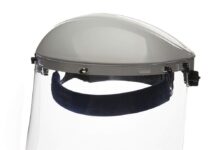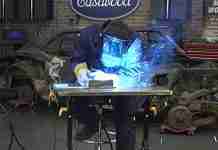In our article, we explore the diverse world of welding tables and the various options available to welders. From sturdy steel workbenches to portable foldable models, we’ll uncover the benefits and features of each type. Whether you’re a seasoned professional or a beginner in the welding field, understanding the different types of welding tables will help you choose the perfect work surface for your projects. So, let’s dive into the fascinating world of welding tables and find the one that suits your needs!
Types of Welding Tables
When it comes to welding, having a reliable and sturdy work surface is essential. Welding tables are specifically designed to provide a stable platform for welding projects. There are various types of welding tables available, each with its own unique features and advantages. In this article, we will explore the different types of welding tables and their applications.
1. Adjustable Welding Tables
1.1 Features
Adjustable welding tables are incredibly versatile and can be modified to suit different welding tasks. These tables typically feature adjustable height and tilt angles, allowing welders to customize the work surface according to their needs. Additionally, some adjustable welding tables come with built-in clamps or slots, which enable secure and precise positioning of the parts being welded.
1.2 Advantages
The adjustable nature of these tables offers several advantages. Firstly, welders can achieve the most comfortable working position, reducing the risk of fatigue and improving productivity. The ability to customize the height and tilt angle also allows for easier access to the workpiece and ensures optimal visibility during the welding process. Moreover, adjustable welding tables promote better ergonomics, making it easier to achieve precise welds.
1.3 Applications
Adjustable welding tables find applications in a wide range of welding projects. Whether it’s small-scale metal fabrication or heavy-duty industrial welding, these tables can be adapted to meet the specific requirements of the task at hand. From intricate artistic welding to large structural welding, the adjustability of these tables makes them suitable for various applications.
2. Fixed Welding Tables
2.1 Features
Fixed welding tables, as the name suggests, are stationary and cannot be adjusted in height or tilt angle. These tables are typically made from heavy-duty materials, such as steel, to ensure stability and durability. They often feature a flat surface with grid lines or patterns, which assist in precise positioning and alignment of the workpiece.
2.2 Advantages
The main advantage of fixed welding tables lies in their stability. The solid construction and stationary nature of these tables provide a reliable foundation for welding projects. Welders can work with confidence, knowing that their work surface will remain steady throughout the welding process. Additionally, fixed welding tables are generally more cost-effective than their adjustable counterparts.
2.3 Applications
Fixed welding tables are commonly used in workshops, fabrication shops, and industrial settings where stability and permanence are crucial. These tables are well-suited for repetitive welding tasks or projects that require a consistent work surface. They are often used for larger or heavier workpieces that necessitate a strong and immobile platform.
3. Portable Welding Tables
3.1 Features
Portable welding tables are designed for easy transportation and on-the-go welding projects. These tables are typically lightweight and compact, making them highly portable. They often come with foldable legs or handles, allowing for convenient storage and movement. Despite their portability, these tables still provide a stable and sturdy work surface.
3.2 Advantages
The primary advantage of portable welding tables is their convenience. Welders who frequently work on different job sites or need to move their equipment often find portable tables invaluable. These tables enable welders to set up a reliable workstation wherever they go. Additionally, the compact size and foldable design make them ideal for workshops with limited space.
3.3 Applications
Portable welding tables are commonly used by field welders, contractors, and hobbyists who require mobility. They are perfect for outdoor welding projects, repairs in remote locations, or temporary setups. Portable tables also serve as an excellent backup option when additional workspace is needed in a workshop or a job site.
4. Plasma Cutting Tables
4.1 Features
Plasma cutting tables are specifically designed to accommodate the unique requirements of plasma cutting processes. These tables often feature a slotted or grid surface, which allows for effective smoke and debris extraction during cutting. They also provide a flat and heat-resistant work surface that can withstand the intense heat generated by plasma cutting.
4.2 Advantages
The main advantage of plasma cutting tables is their ability to enhance the efficiency and accuracy of plasma cutting operations. The slotted surface facilitates the removal of metal shavings and smoke, keeping the work area clear and visible. The heat-resistant properties of these tables ensure longevity and prevent damage caused by extreme heat. Furthermore, the grid patterns on the surface assist with precise part placement and alignment.
4.3 Applications
Plasma cutting tables are commonly utilized in metal fabrication shops, automotive industries, and other sectors that require precise and efficient plasma cutting. These tables provide a dedicated surface for plasma cutting operations, ensuring optimal results and minimizing the risk of damage to the workpiece.
5. Rotary Welding Tables
5.1 Features
Rotary welding tables integrate a rotating mechanism into the work surface, allowing for 360-degree rotation of the workpiece. These tables often have adjustable speed controls and can be set to either continuous rotation or intermittent indexing. They may also include built-in clamps or fixtures to secure the workpiece during rotation.
5.2 Advantages
The primary advantage of rotary welding tables is their ability to simplify the welding of cylindrical or irregularly shaped workpieces. The rotating feature ensures even and consistent welds on all sides of the workpiece. Welders can easily access various angles without the need for repositioning, thereby saving time and effort. Moreover, the built-in clamps or fixtures provide stability and prevent movement during the rotation.
5.3 Applications
Rotary welding tables are commonly employed in industries that deal with cylindrical objects or complex fabrications. They find applications in pipe welding, tube fabrication, and the assembly of rotational components. By eliminating the need for manual repositioning, these tables increase efficiency and accuracy in welding tasks.
6. Clamping Welding Tables
6.1 Features
Clamping welding tables come equipped with various clamping mechanisms or fixtures to securely hold the workpiece in place. These tables often have multiple slots or holes that allow for the attachment of different clamps or clamping accessories. The clamps can be adjusted and tightened to ensure the workpiece remains immobile during welding.
6.2 Advantages
The primary advantage of clamping welding tables is their excellent stability and versatility in holding different shapes and sizes of workpieces. The clamping mechanisms provide a secure grip, allowing welders to work with precision and confidence. The ability to adjust and position the clamps enables optimal accessibility to the weld joint, ensuring superior weld quality.
6.3 Applications
Clamping welding tables are extensively used in fabrication shops, repair workshops, and industries that involve intricate or irregularly shaped workpieces. They are especially useful for projects that require precise alignment or when welding multiple parts together. These tables provide a reliable and controlled platform for welding operations, allowing for efficient and accurate results.
7. Tilt-Top Welding Tables
7.1 Features
Tilt-top welding tables have a work surface that can be tilted or angled to various degrees. They often come with adjustable locking mechanisms to secure the desired tilt angle. These tables may also have built-in slotted surfaces or fixtures to assist with part placement during welding.
7.2 Advantages
The primary advantage of tilt-top welding tables is their flexibility in achieving different working angles. Welders can easily tilt the surface to their preferred position, allowing for comfortable and ergonomic welding. The ability to lock the tilt angle ensures stability and prevents accidental movement during the welding process. Additionally, the slotted surfaces or fixtures aid in the precise alignment of the workpiece.
7.3 Applications
Tilt-top welding tables are commonly used for projects that require welding at non-standard angles or when accessibility is limited. They provide welders with the freedom to position the work surface according to their specific needs, resulting in improved comfort and weld quality. These tables find applications in various industries, such as aerospace, automotive, and art fabrication.
8. Water-Cooled Welding Tables
8.1 Features
Water-cooled welding tables are constructed with channels or grooves that allow the circulation of coolant or water. They often have built-in plumbing connections for the water supply and drainage. The water-cooling system helps dissipate heat during welding, preventing excessive heat buildup and maintaining a stable work surface temperature.
8.2 Advantages
The main advantage of water-cooled welding tables is their ability to reduce heat transfer to the work surface, preventing warping or distortion of the workpiece. The cooling effect enables prolonged welding sessions without overheating the table. Moreover, water-cooled tables provide a clean and smoke-free working environment, as water acts as a natural anti-spatter agent.
8.3 Applications
Water-cooled welding tables are widely used in applications that involve high heat or continuous welding. Industries that require long welding sessions, such as shipbuilding, heavy machinery, or pipeline construction, benefit from these tables. By maintaining a stable work surface temperature, water-cooled tables ensure consistent weld quality and minimize the risk of defects.
10. Magnetic Welding Tables
10.1 Features
Magnetic welding tables incorporate powerful magnets into the work surface, allowing for secure and quick attachment of the workpiece. These tables often have a flat or slotted magnetic surface that provides optimal magnetic grip. Some magnetic tables also feature adjustable angles or rotating mechanisms for enhanced versatility.
10.2 Advantages
Magnetic welding tables offer several advantages, primarily in terms of efficiency and convenience. The magnetic grip eliminates the need for clamps or fixtures, streamlining the setup process and reducing setup time. Welders can easily position and reposition the workpiece on the magnetic surface, enabling quick changes between welding operations. Additionally, the adjustable angles or rotating mechanisms provide flexibility in working with different angles or orientations.
10.3 Applications
Magnetic welding tables are particularly useful for small or lightweight workpieces that require frequent repositioning. They are commonly used in industries that involve repetitive welding tasks or mass production. Magnetic tables also find applications in the automotive industry, workshop settings, and any projects where quick and easy workpiece attachment is desired.
In conclusion, welding tables come in various types, each designed to cater to specific welding needs. Adjustable tables offer versatility and customization, while fixed tables provide stability and cost-effectiveness. Portable tables offer convenience for on-the-go welding, whereas plasma cutting tables are designed specifically for plasma cutting processes. Rotary tables simplify welding cylindrical objects, and clamping tables provide a secure grip for different workpieces. Tilt-top tables offer flexibility in achieving non-standard angles, and water-cooled tables dissipate heat for continuous welding. Lastly, magnetic tables provide efficiency and convenience through quick workpiece attachment. With a wide range of welding tables available, welders can choose the most suitable option for their specific applications and enhance their welding capabilities.





































